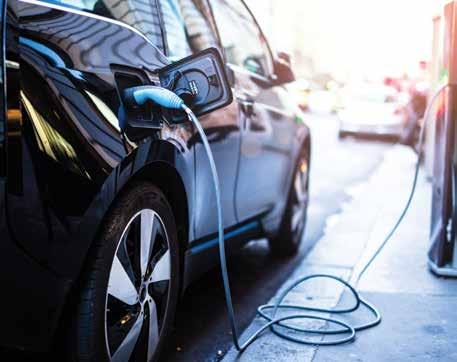
3 minute read
A look at the future of electric vehicles in Australia
With EV sales making up a small 1.6% of all new vehicle registrations in 2021, one of the most cited reasons that people are reluctant to take up electric vehicles is a lack of charging infrastructure.
This is according to Savvy who has used Electric Vehicle Council of Australia March 2022 data to look into the current state of EV charging infrastructure in Australia and what’s planned for the future.
Advertisement
• 700 new fast charging stations will be built around Australia in the next five years • Federal investment of $24.55 million through the first round of Future Fuels Fund for 400 public fast charging stations • Federal Labor government proposes $39.3m additional investment in providing charging stations every 150km • 350kW Ultra-Rapid chargers provide a potential 400km of range in 15 minutes • New EVs with industry leading 350kW maximum DC fastcharge rate claim to gain 111km range in 5 minutes
Lack of charging facilities has led to failures in the EV space in other countries, so putting in infrastructure first makes sense. However, this leads to other questions as there are many other reasons why EV take up stood at 1.6% in 2021.
Questions such as, how does it work with the reliance of this new charging infrastructure coming from Australia’s nearly 80% present energy production base of coal and natural resources. Surely, it would not be relying completely on the weather to work (renewables).
Also, what about future advancements in battery charging and storage technology – things that are yet invented, the cost of EVs, the cost to the environment on extraction of the rare earths and metals needed to manufacture batteries, the battery disposal at end of life; which leads people to question going electric is really that green
The report rightly points out the tyranny of distance in Australia saying, We are remote as a continental island – a country that’s nearly 7.7 million km2 in size – and our major cities much more distant than other developed countries. Incidentally, the fully electric Nissan Leaf has a full range of 385km.
The types of EV charging stations
Electric vehicles – such as fully electric or Plug-in Hybrid Electric vehicles (HEV) – require electric power from the grid (although not fully for Hybrids, which run on a mix of electric and petrol.)
EVs require DC power – supplied at a charging station direct or converted from AC to DC by the car’s internal converter. Typically, one kilowatt (kW) will add one kilometre for each ten minutes of charging.
AC public charging stations fall into the range of about 7kW to 40kW and are usually referred to as “destination charging” stations, allowing cars to be recharged overnight.
DC charging stations are much quicker in comparison and designed for immediate top-ups.
There are two types of DC public charging stations – above 50kW fast charging and below 50kw regular charging.
At 50kW, a vehicle will add 50km of range (on average) for each ten minutes of charge.
Although few and far between, the fastest available charging stations in Australia are 350kW “ultra-rapid” facilities, such as those offered by providers like Chargefox which provides a theoretical 400km of range in 15 minutes. More have been promised by state and federal governments in the coming years.
Even if every DC charging point was capable of 350kW output, the vehicles themselves are limited by what they can accept. Until recently, top of the line EVs in Australia with DC maximums of 110kW to 200kW were considered high, however the latest vehicles such as Hyundai’s Iconiq 5 and the Kia EV6 both have max per hour charge speeds of 350kW.
Other factors affect total charge time such as battery size or capacity.
Fast charging
As of January 2022, there are 293 fast charging locations around Australia. This represents an increase of 85% since August 2020 (157).
Regular charging
As of January 2022, there are 1,580 regular charging stations in Australia. This represents an increase of 29% since August 2020 (1219.)
The previous Coalition government pledged $24.55 million to co-funding 400 fast-chargers across approximately 200 sites, mainly in metropolitan locations.
The new Labor government announced a pre-election policy of a $39.3 million investment in a national electric vehicle charging network to establish charging stations every 150km on Australia’s major transport route. The amount will be matched by the NRMA.










